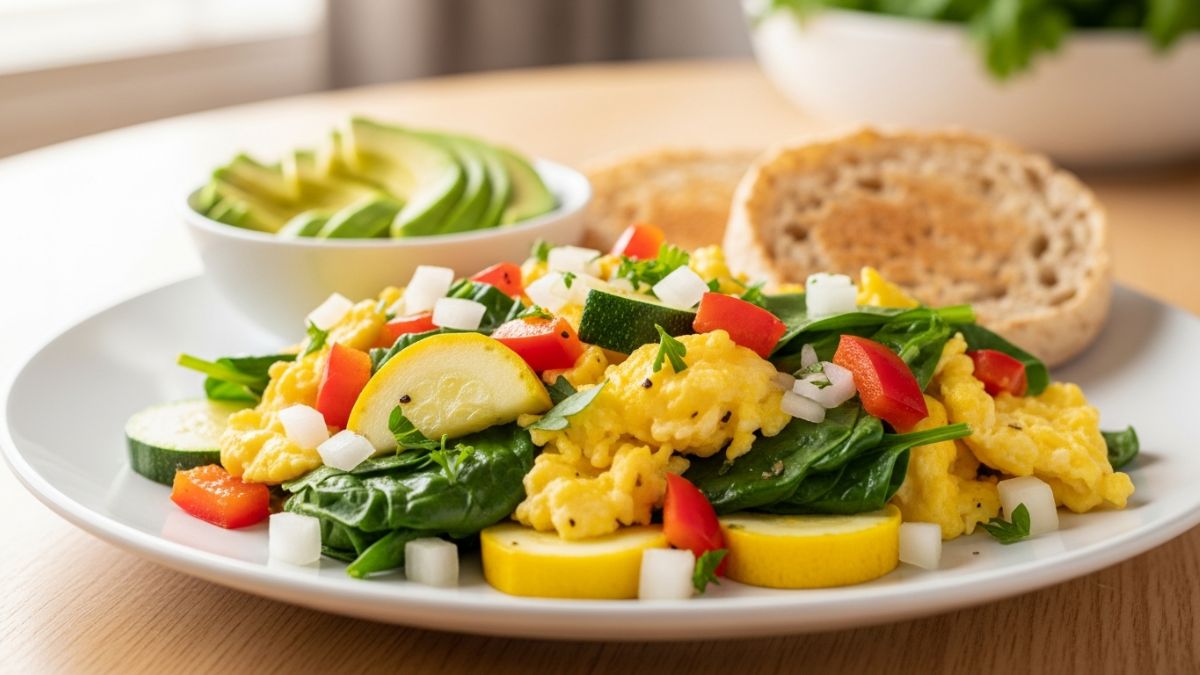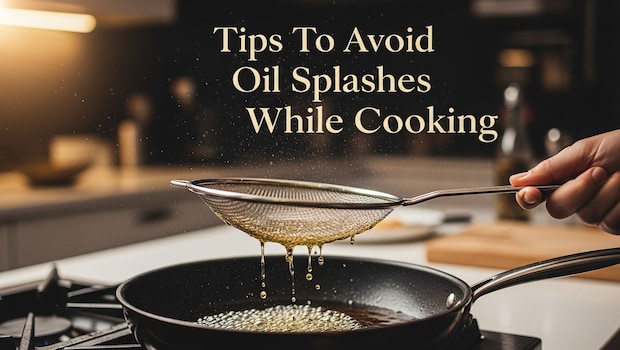Cooking can be oddly therapeutic, until a few drops of hot oil remind you otherwise. We have all been there - frying puris that pop like firecrackers, or sauteing onions that send sizzling oil across the stove. Oil splattering isn't just messy, but it can also be dangerous, leaving burns and greasy kitchen walls behind. The reason lies in simple kitchen science, like heat and moisture. But don't worry, you do not have to give up frying altogether. With a few smart hacks, you can enjoy crispy pakoras, golden cutlets, and flawless tadkas without the splash zone drama. Here's how you can keep oil from splattering while cooking.
Also Read: 1-Minute Desi Hacks To Make Chicken Breast Juicy And Flavourful
Here Are 6 Hacks To Keep Oil From Splattering While Cooking
1. Pat Ingredients Completely Dry Before Frying
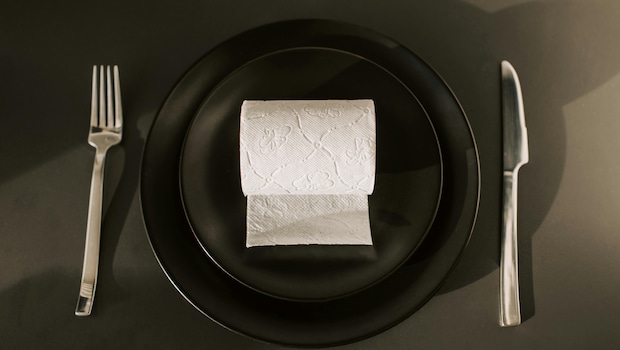
Photo: Pexels
Even the tiniest drop of water can make the oil react violently. Before frying, always pat ingredients dry, especially vegetables, paneer, or seafood. You can use absorbent paper towels to soak up extra moisture, and let marinated foods rest for a few minutes before going into the pan. If you are using frozen ingredients, thaw and bring them to room temperature first. The drier your ingredients, the calmer your oil will be.
2. Do Not Overcrowd The Pan
Adding too much at once drops the oil's temperature sharply, leading to uneven bubbling and sudden splatter. Fry in batches, leaving enough space for each piece to cook evenly. Overcrowding also traps steam, which can pop and cause oil to splash out. For crispier results, use a wide-bottomed pan so heat spreads evenly. Remember, patience in batches equals perfection on the plate.
3. Control Oil Temperature Smartly
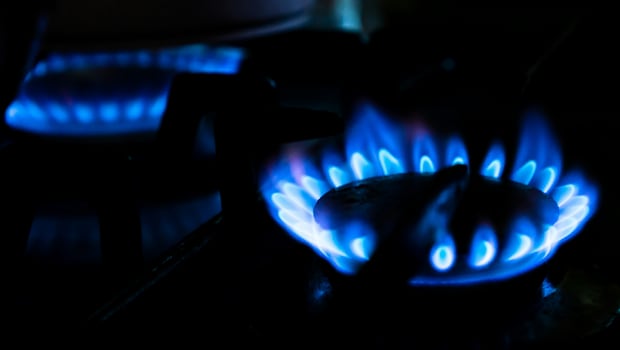
Photo: Unsplash
Temperature consistency is everything. When oil gets too hot, it smokes and splashes. When it is too cold, the moisture builds up instead. Ideal frying oil should shimmer, not fume. Keep your flame medium-high and, if possible, use a kitchen thermometer (170–180°C works best for deep frying). Stable temperature means fewer micro-explosions and cleaner results. A steady flame keeps both your food texture and your countertop under control.
4. Add A Pinch of Salt Or Flour Before Frying
Before you drop anything into the kadhai, add a pinch of flour or salt. These dry ingredients absorb hidden moisture droplets and stabilise oil, preventing tiny bursts that cause splattering. It's a trick long used in professional kitchens, and it is simple yet extremely effective. This step works especially well for moisture-heavy items like okra, paneer, or batter-coated snacks.
5. Use A Splatter Guard Or Deep Kadhai
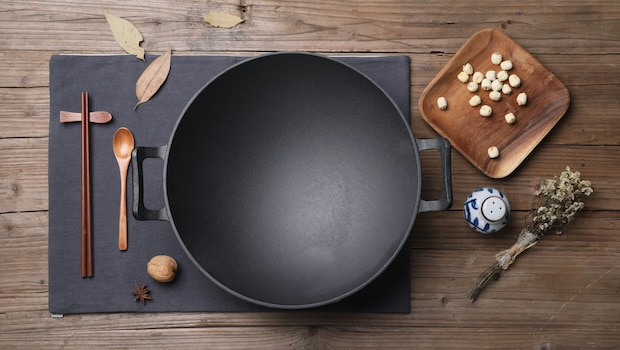
Photo: Unsplash
Instead of battling the splatter, block it. A deep kadhai or splatter screen helps keep the oil inside while letting steam escape. It is particularly useful for shallow frying or tempering tadka. If you do not have a guard, try a fine mesh lid. Not only is it a handy alternative that keeps oil from spraying all over your backsplash, but it also doesn't affect the cooking temperature.
6. Turn Off Heat Before Adding Delicate Ingredients
One of the smartest and safest tricks is to temporarily switch off the flame before adding delicate or coated items. The oil stays hot enough to cook but cool enough to prevent sudden eruptions. Once your ingredients settle at the bottom, turn the flame back on. This method gives you control and calmness. So expect no sizzling surprises, just smooth frying.
How To Know If Oil Is Ready For Frying
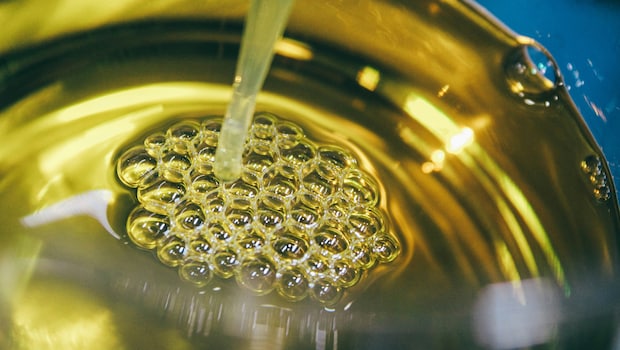
Photo: Unsplash
Here are some simple tricks to know if the oil is ready or not for frying:
- Drop a small crumb into the oil. If it rises gradually and sizzles, it's ready.
- If it browns instantly, the oil's too hot. If it sinks silently, it's too cold.
- Keeping oil at a consistent shimmering state prevents both splatter and sogginess.
Which Oil Are Best For Splatter-Free Frying
For frying, you can use oils with high smoke points like rice bran, groundnut, or refined sunflower oil. They handle heat better and remain stable during prolonged frying. Avoid extra virgin olive oil or mustard oil for deep frying, as they tend to splutter due to lower smoke points and moisture retention.
Expert Tips To Keep Your Kitchen Oil And Mess-Free
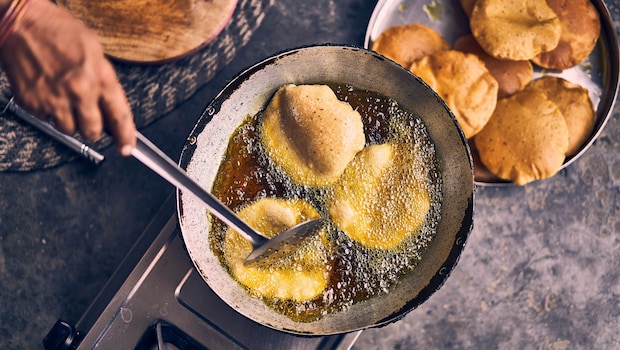
Photo: Unsplash
- Always use a dry, clean pan before pouring oil.
- Maintain a safe distance while adding food.
- Wipe the stove immediately after frying to prevent sticky residues.
These tiny habits make a big difference in keeping your cooking area safe and spotless.
Also Read: Should You Cook Or Heat Honey? Know This Before Picking Up The Bottle
So, go on and make your favourite fried snacks at home... without splattering any oil!
About Nikita NikhilMeet Nikita, a passionate soul with an insatiable love for two things in life: Bollywood and food! When she's not indulging in binge-watching sessions, Nikita can be found behind the lens capturing moments or expressing her creativity through painting.

